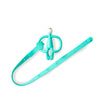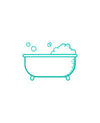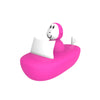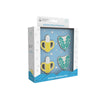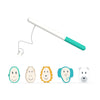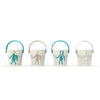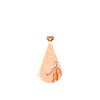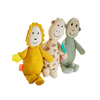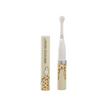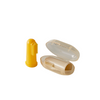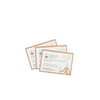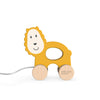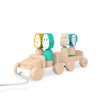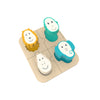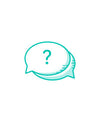How to Read to Your Baby: A Guide
Though it’s said that reading to babies is beneficial to their cognitive development, it’s a slow, ongoing process and the results are not always immediately obvious, which can leave some parents feeling like they’re not quite getting it right! Read on for our top tips to ensure that your little one is receiving the maximum benefit from reading time…
Keep it Tangible
Physical books, as opposed to screens, have loads of sensory components which work together to help develop your child’s cognition. The colours in the pictures, the smell of the pages, the sound and feeling of pages turning - all of these things give infants opportunities to engage in the physical realm, and are helpful in developing memory, as well as motor skills!
Show Face
While the letters on the page still mean very little to a baby, there are huge benefits in hearing the words themselves read out. Babies pick up on facial expressions and tone when listening to adults reading, which not only helps with language development and speech processing, but is also a bonding experience between child and parent. Position your baby so they can see your face, either lying in your lap and looking up, or sitting in a chair or rocker across from you. Look at your baby’s face after you read each sentence and exaggerate your expressions - in time you’ll notice that your baby starts to reflect these back at you!
Choose Your Text
Books with repetition or rhymes are always winners, as they help babies to find and absorb patterns in language, and as they develop their own speech these will be the parts that they try to mimic. As you read these parts out loud, make emphasis on the rhyming sections, or speak louder for repeated text to help your child extract the important language patterns!
Choose Your Illustrations
Children’s books are usually illustrated with colourful characters and vibrant hues, which not only catch your child’s attention but also help them with internal processing. Look out for books which focus on colours, shapes, animals, and textures, and make a point to show these to your baby. Check out our Matchstick Monkey Book for an interactive finger-trail adventure through colours!
Make it Routine
Routines help babies and toddlers to make sense of their daily activities and to predict (and anticipate!) what they are doing next. Choose a time around another activity, such as bathtime or dinner, and insert reading time, so that as your child finishes their dinner or gets ready for their bath, they know that they will also be reading, and even come to look forward to it!
However your baby reacts, remember to persevere! Though they might not initially seem interested or affected, over time they will come to love and even look forward to reading their favourite book, and it’s a good habit to get them into not just for childhood but for a lifetime!







